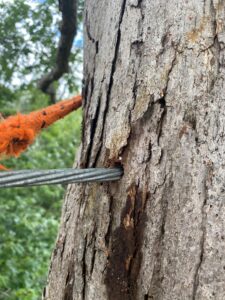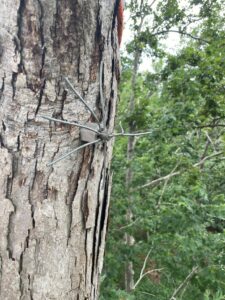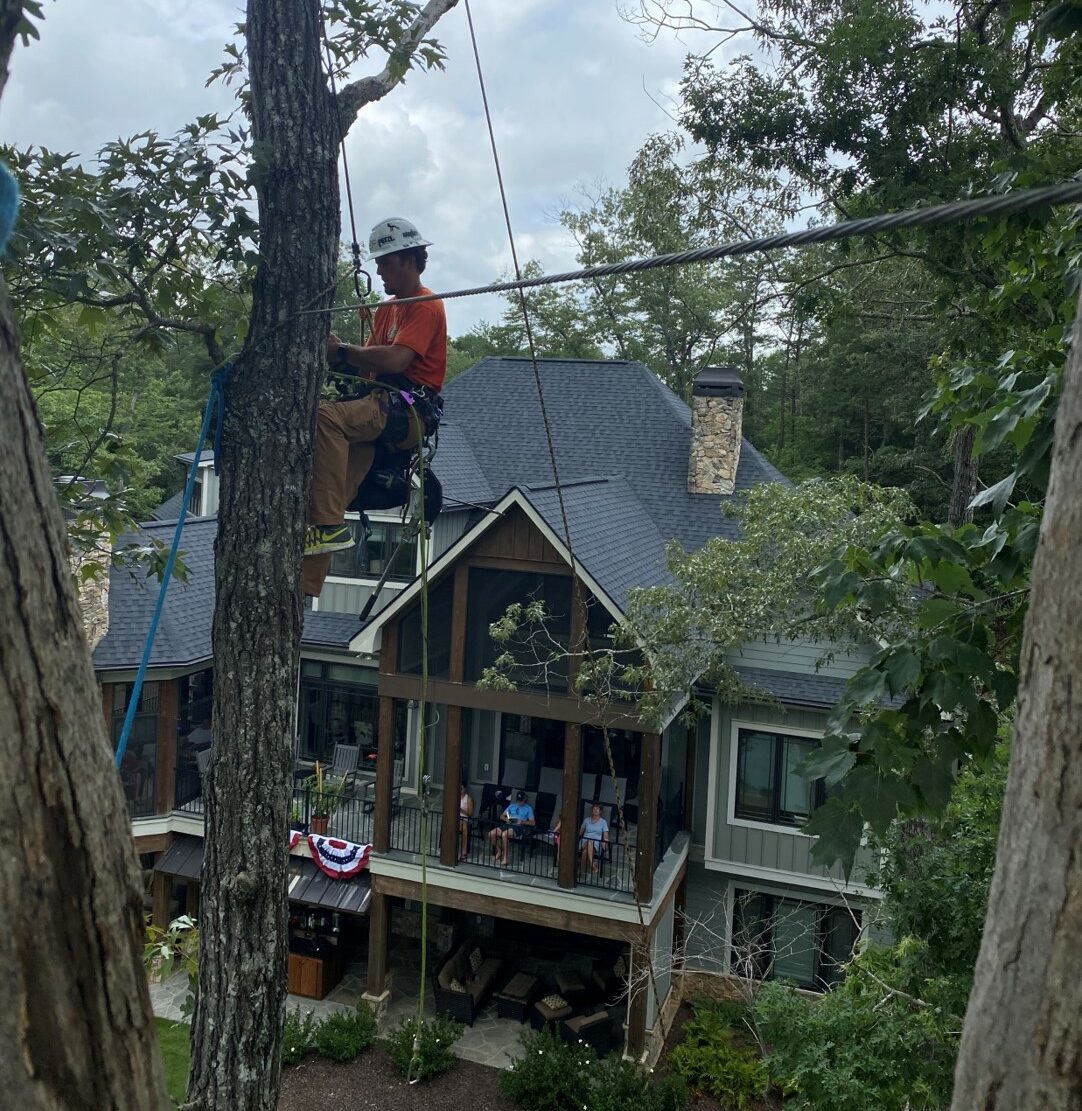How Tree Bracing and Cabling works


Tree bracing and cabling is a process used by arborists to add structural support to a tree. It involves adding strong braces and/or cables to a tree to help prevent possible damage or failure, typically in the event of stormy weather.
For instance, cabling and bracing involves adding flexible steel cables between branches or trunks of a tree, connecting them between bracing rods or bolts attached to the tree. Dead branches are also removed during the process, further minimizing the risk as they are the most likely to break off during a storm.
This helps to reduce the movement of any healthy branches and trunks, while also offering additional support to any weak spots, limiting how much stress they face in times of high winds and heavy rains.
Bracing and cabling is typically used to support and brace multiple tree limbs or trunks, whether it’s a cluster of branches in the canopy or a split trunk at the base of the tree.
The Benefits of Tree Bracing and Cabling
By providing added structural support to various parts of a tree, bracing and cabling makes the tree much less susceptible to damage from the elements. For instance, branches cannot move as freely as they once did, reducing the stresses and fractures caused by high winds, meaning they’re less likely to snap off.
This provides obvious safety benefits in times of storms, while also greatly reducing the risks of property damage and possible death to the tree from excessive damage. Certain species of trees are more susceptible to damage from high winds, such as those with open canopies and trees prone to multiple trunks. There are many species like this native to the Upstate.
Will Tree Cabling and Bracing Help My Tree Survive Storms?
Simply put, yes! Give us a call today to schedule a free consultation with a tree expert!



